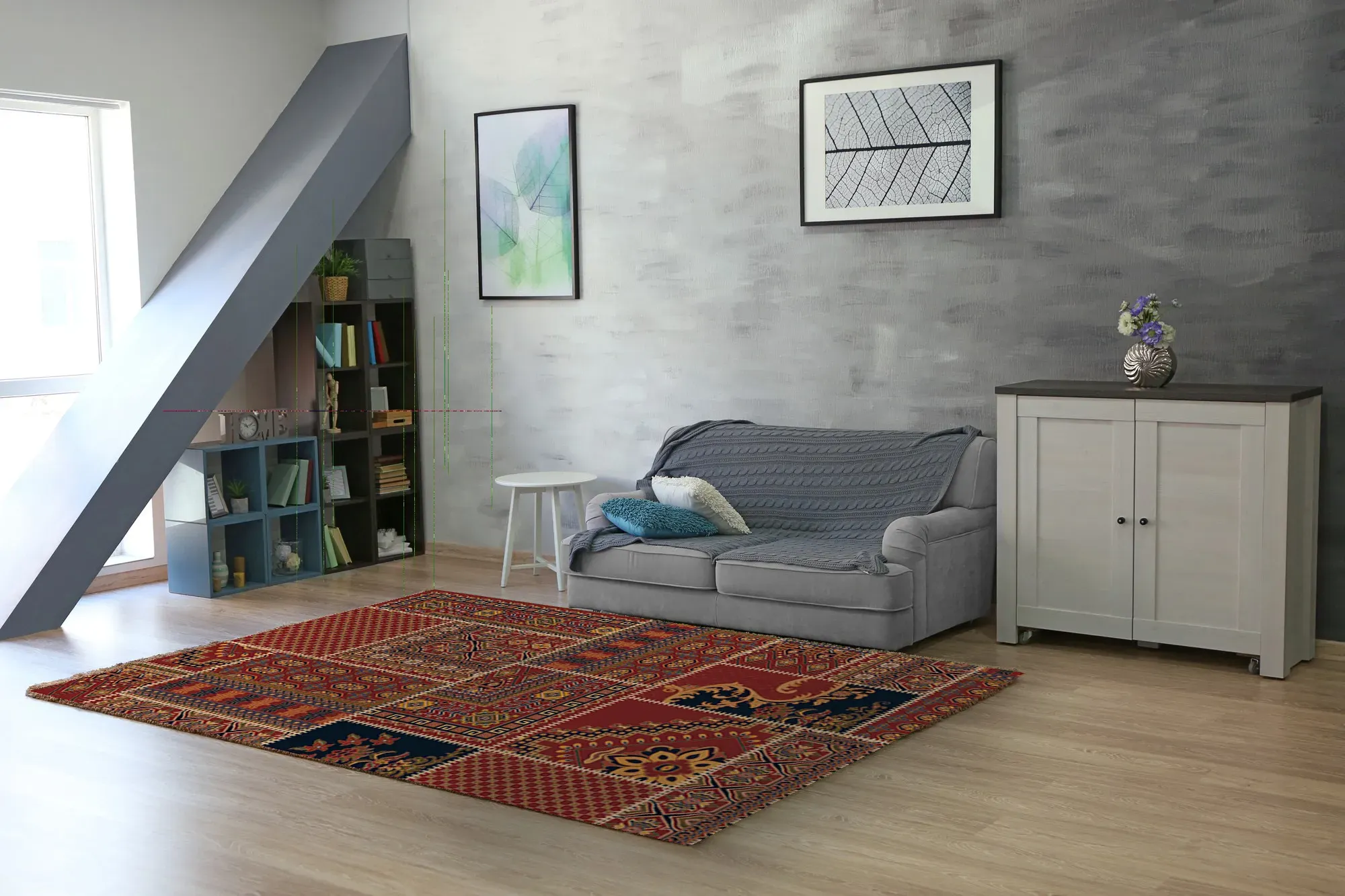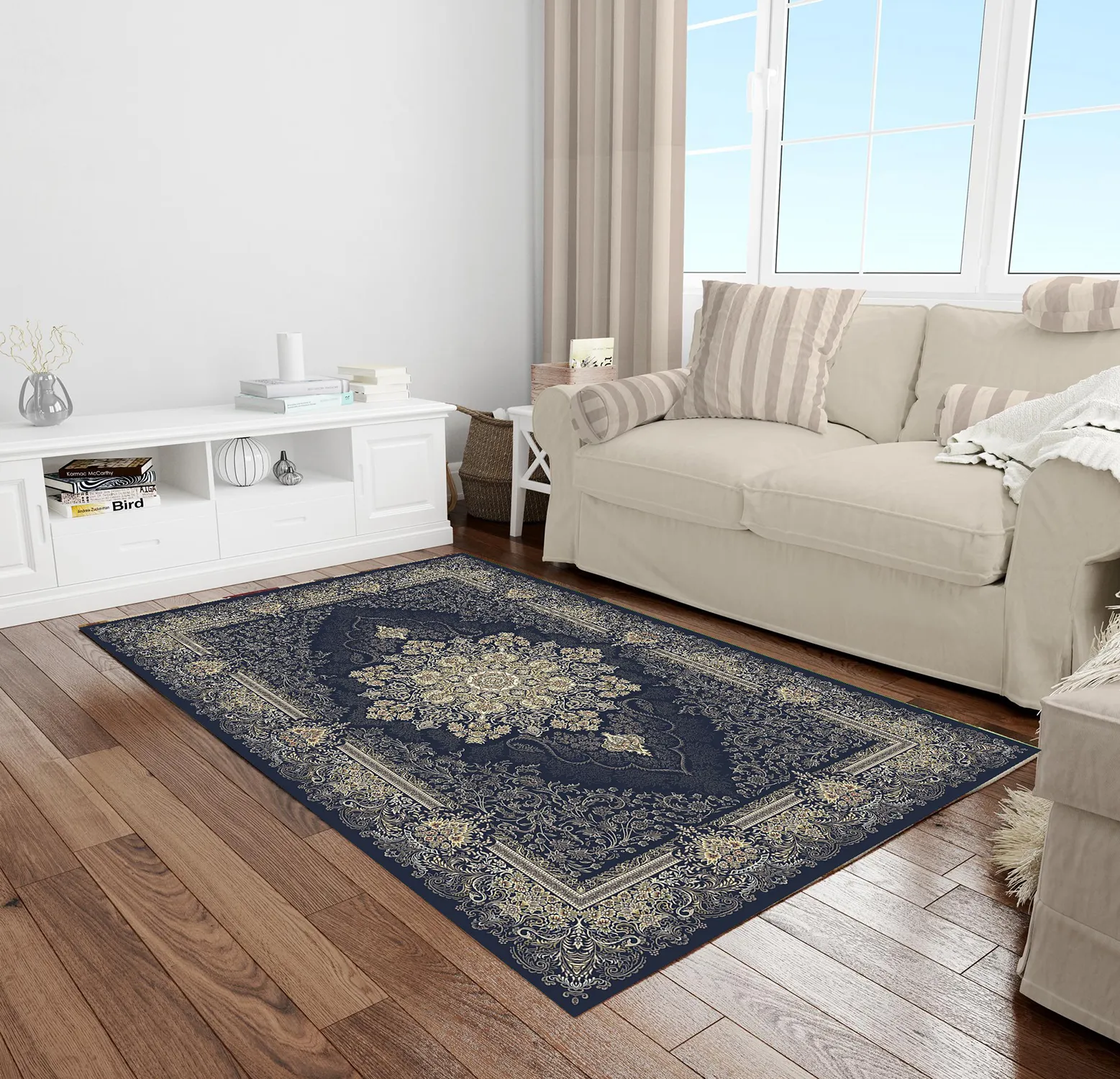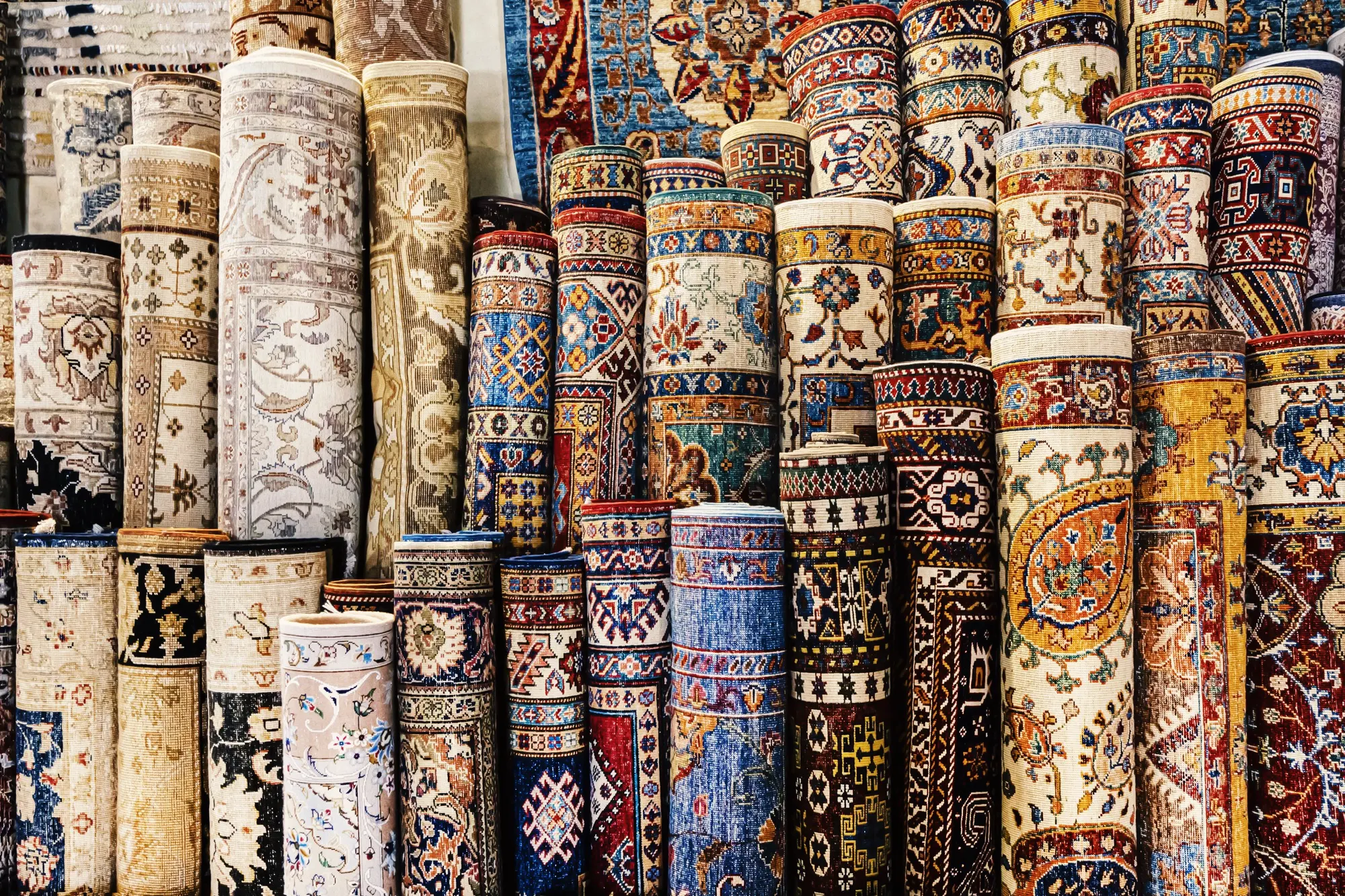With the industrialization of carpet weaving and the increase in the number of machine-made carpet factories and handwoven carpet workshops, it may be necessary to look at this industry’s environmental impacts. Industrialization has drawn the attention of many environmental activists because, without proper adherence to environmental principles and regulations, these factories can pose risks and damage to the environment.
From the past to the present, carpets have held a special place in Iranian culture, and people from all social classes have used carpets as both a floor covering and a home decoration. Therefore, carpet weaving has been prevalent in Iranian culture since ancient times. However, with the increase in population, the demand has also risen. This increased demand has led to more factories and industrial machines.
Dyeing of Machine-Made and Handwoven Carpets
Coloring machine-made and handwoven carpets involves various stages in the weaving process. One of these stages is the dyeing process. In this operation, the color is applied to the fibers at a suitable temperature and for a specific duration. The yarn and fibers are immersed in a solution of chemical and dye substances, absorbing the desired color. Some believe that chemical dyes, no matter how shiny and beautiful initially, may become dull after wear and tear. However, natural dyes tend to become shinier and more beautiful with increased use and wear.
Coloring Agent
The coloring agent refers to all natural and chemical substances capable of coloring fibers and textiles. Coloring agents are divided into two main categories: natural dyes and chemical dyes. However, there is also a third category that results from the combination of these two types of dyes.
Natural dyes are produced using three methods:
- Dyes that are produced from mineral substances, such as red clay.
- Dyes that are produced from insects or specific shells, such as cochineal insects and murex shells.
- Dyes that are produced from pigments found in the roots, leaves, fruits, and skins of plants.
These substances have historically met the coloration needs of humans before the demand escalated. However, challenges in obtaining natural dyes and their impracticality prompted scientists to embark on the synthesis of chemical dyes. Nevertheless, chemical dyes also pose their own set of challenges, including environmental issues arising from the effluents of synthetic dyes.
Today, the examination of the environmental impact of dyeing processes has gained significant importance worldwide. In numerous regions, especially in developing countries, specific regulations regarding the types of dyes used and methods for disposing of dye-related effluents have not been formulated. However, in states like California, USA, specific and stringent regulations in this regard are actively enforced. These regulations dictate the types of dye materials and dyeing methods permitted.
Properties of Disperse and Cationic Dyes
Disperse Dyes:
Disperse dyes are considered synthetic dyes that lack ionizing agents. These dyes have lower solubility in water, making them suitable for dyeing polyester fibers and textiles. Disperse dyes exhibit high biodegradability in the environment and are free from toxic and harmful substances. Therefore, they pose minimal harm to the environment and are suitable for eco-friendly applications.
Cationic Dyes (Basic Dyes):
In this type of dye, cationic components play a significant role in color production. Based on research, cationic dyes may have carcinogenic properties. It is crucial to note that, according to environmental indicators, waste from cationic dyes can be harmful.
Today, both cationic and disperse dyes are used for dyeing textiles made from materials such as polyester and acrylic. Polyester and acrylic are among the synthetic materials used in the production of machine-made carpets.
Comparison of Machine-Made and Handmade Carpets in Terms of Environmental Impact
Machine-made and handmade carpets exhibit significant differences. For example, some drawbacks of handmade carpets include the time-consuming nature of their weaving and their higher cost. Additionally, handmade carpets tend to have a greater weight compared to machine-made ones. However, handmade carpets also possess numerous positive features, with one notable aspect being their method of dyeing, which is considered less hazardous to the environment.
Some environmental activists argue that manufacturing products in factories can harm the environment and prefer to shift production towards non-mechanized methods. However, considering the high demand and large population, achieving this entirely may not be feasible.
Another positive aspect of handmade carpets is that they are crafted from natural fibers, which are more compatible with the human body. It’s worth noting that machine-made carpets woven with natural fibers also exist, but their prices are generally higher than regular machine-made carpets.
Given the mentioned points, it can be said that handmade carpets have less environmental impact compared to machine-made carpets. These carpets, being made from natural materials, have the ability to be recycled in the environment. Moreover, the human force involved in their weaving results in less harm to the environment. In contrast, machine-made carpets, particularly in the weaving and dyeing stages, can cause environmental damage. This is because the dyes used in machine-made carpets are often synthetic.
Another consideration is that when discarded, handmade and machine-made carpets have different impacts on the environment. Handmade carpets, due to their natural fibers (wool, silk, etc.), naturally decompose and do not harm the environment when disposed of. However, machine-made carpets, utilizing synthetic fibers, often derived from petroleum-based materials, can be environmentally harmful. Proper disposal methods should be implemented to minimize this impact.
What is the difference between the environmental impacts of machine and hand-woven carpets?
Handwoven carpets have a greater affinity with nature and cause less damage to the environment. The reason behind this is the use of natural fibers in handwoven carpets, such as wool and cotton, which are biodegradable and have a lower environmental impact. Additionally, the production of handwoven carpets involves less machinery and fewer factories, resulting in a lower carbon footprint and energy consumption.
However, the dyeing process in some industrial units, such as the Sahand Carpet, is carried out simultaneously with the weaving process, known as “melt spinning.” This method is considered environmentally friendly due to the absence of dyeing wastewater, which is a common concern in traditional dyeing processes.
Furthermore, the use of polypropylene fibers in Sahand Carpet makes machine-made carpets produced by this factory more recyclable, contributing to reduced environmental damage and waste.






